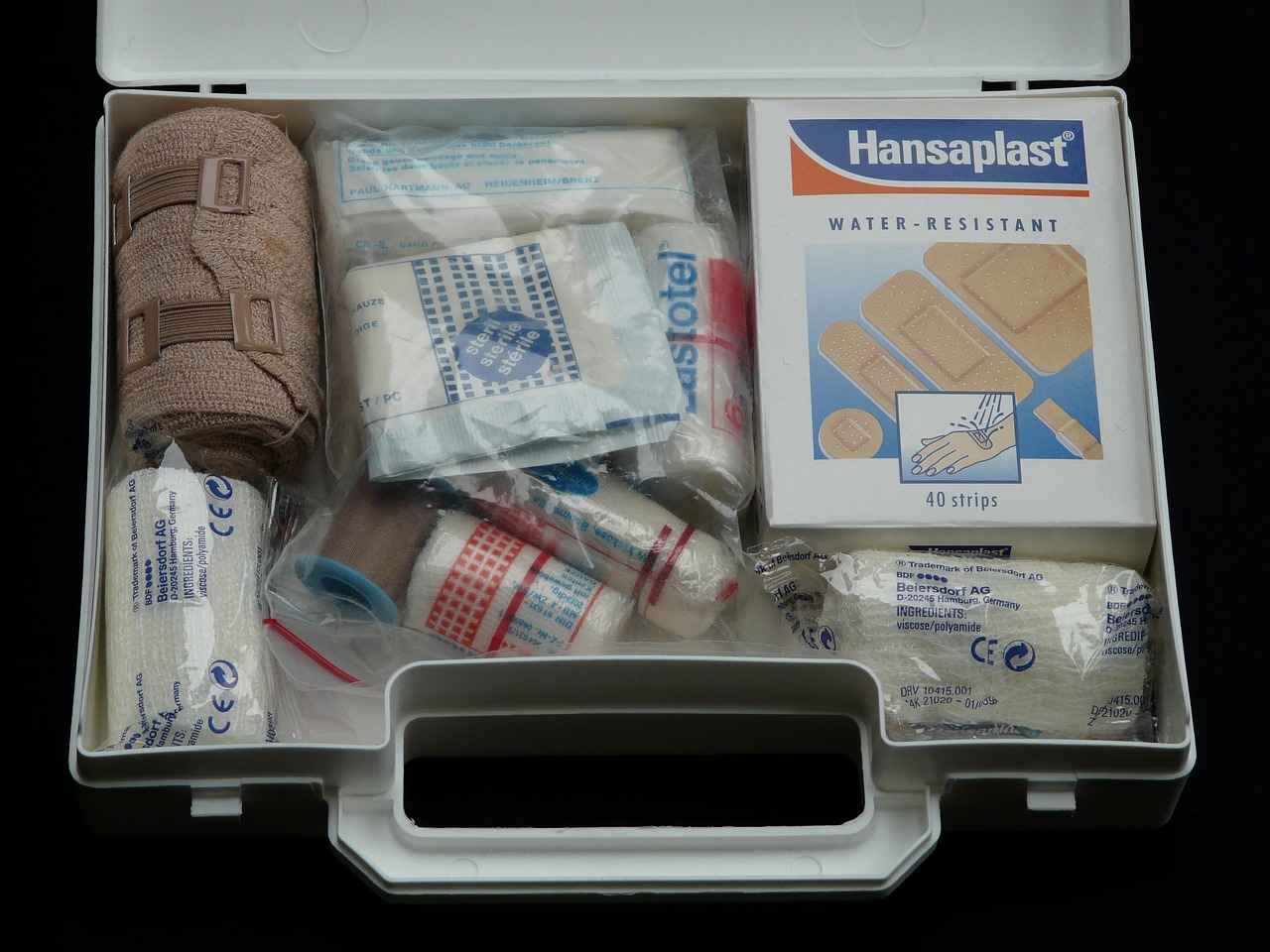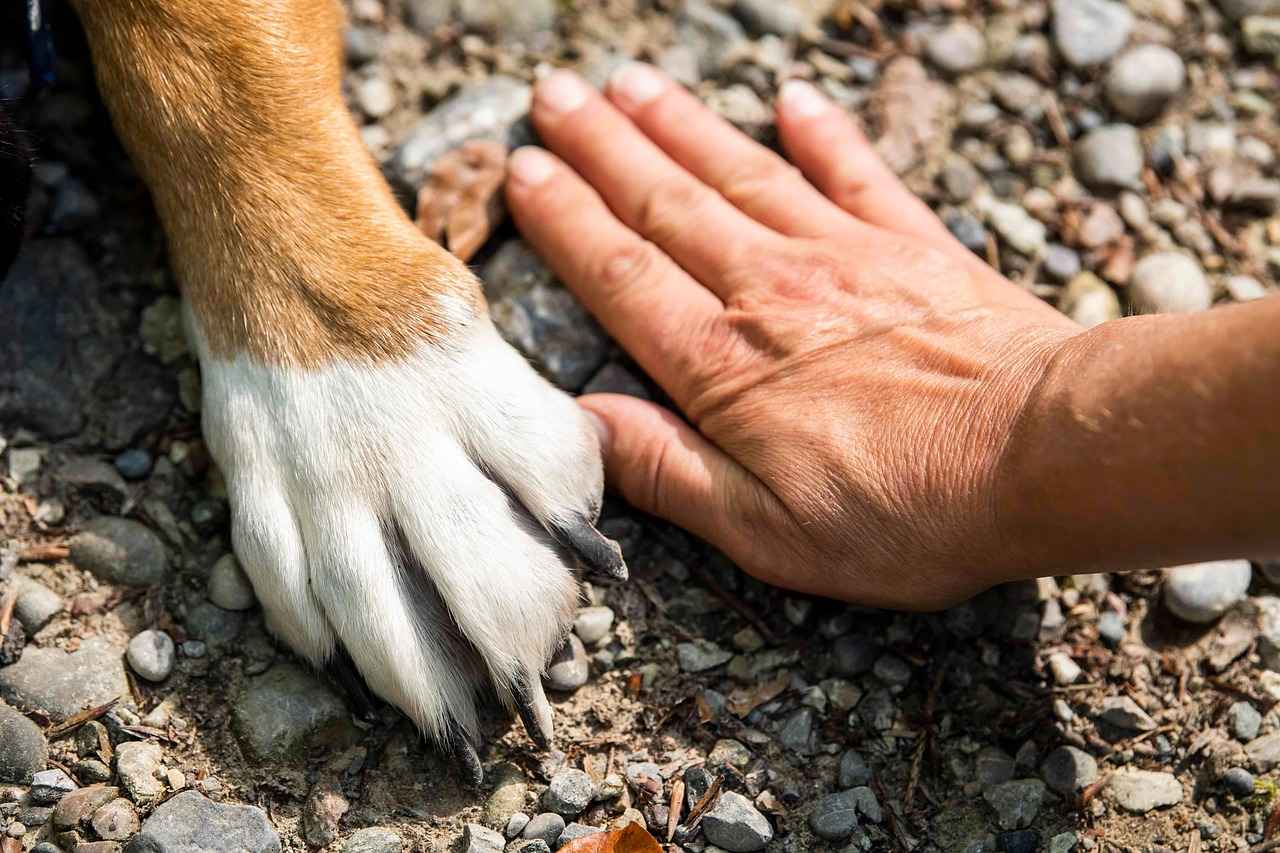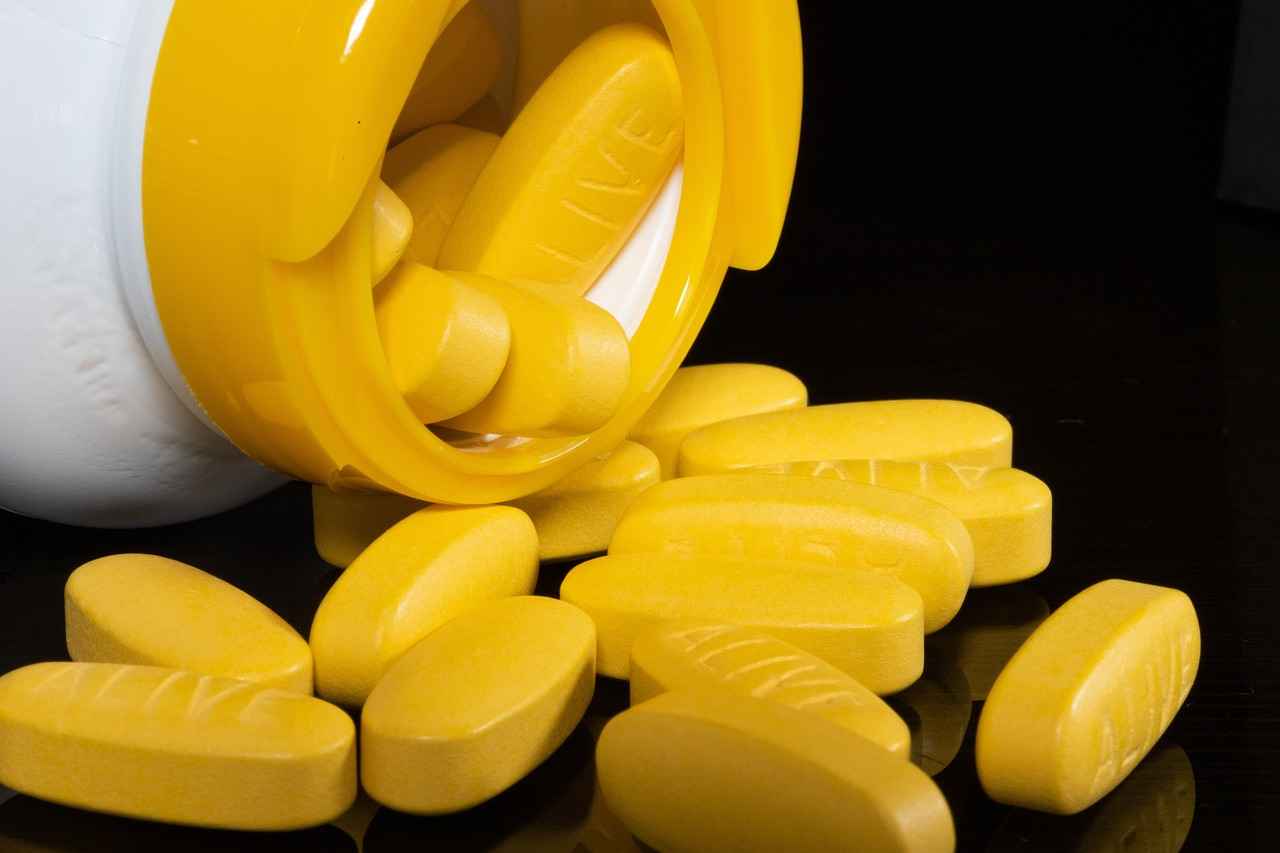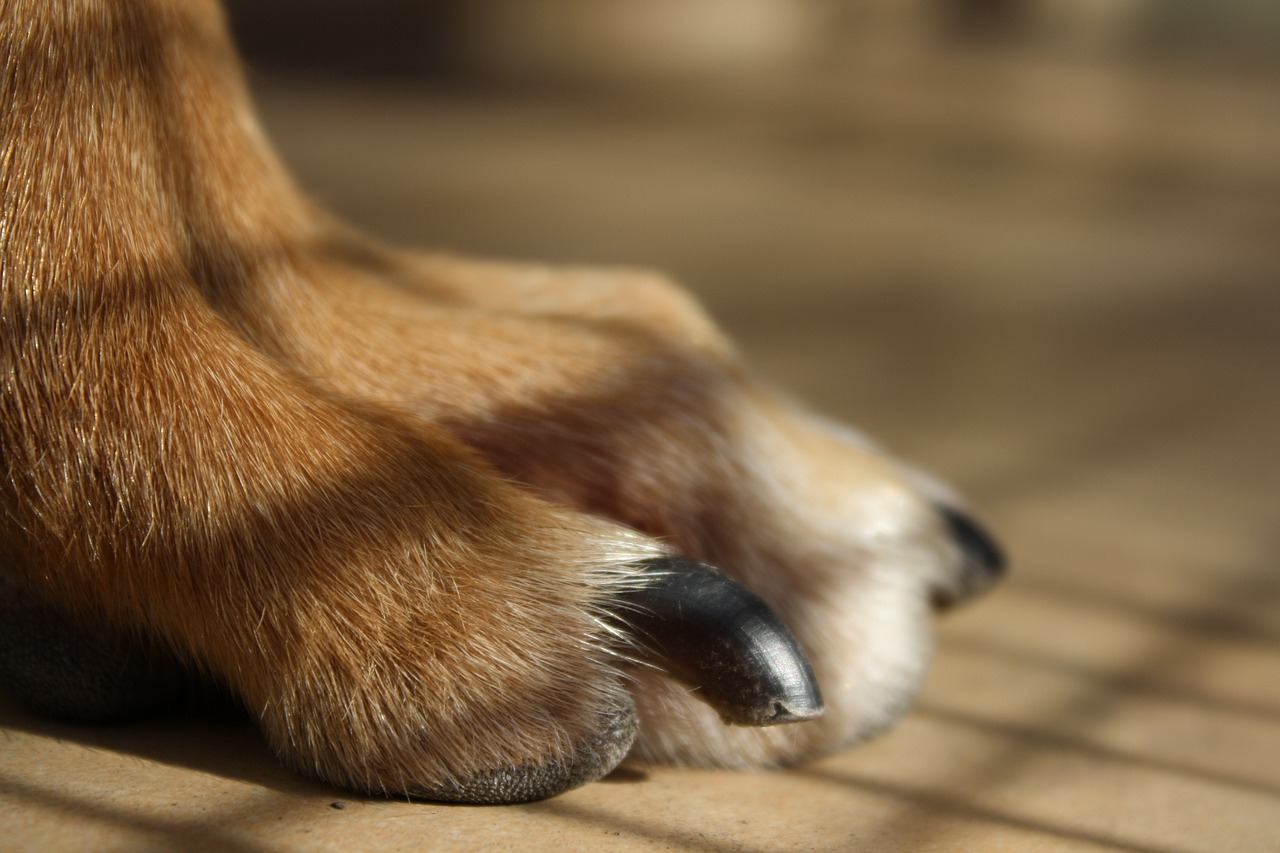This article delves into effective medications and treatments for managing pain and preventing infection after a dog bite. It aims to provide comprehensive insights for those seeking guidance in such situations.
Understanding Dog Bites
Dog bites can lead to serious injuries, including puncture wounds and lacerations. It is crucial to understand the nature of these injuries for effective treatment and prevention of complications. Immediate care can significantly impact recovery.
Immediate First Aid for Dog Bites
Administering first aid promptly can greatly reduce the risk of infection. Here are essential first aid steps to take immediately after a dog bite incident:
- Wash the wound thoroughly with soap and water.
- Apply a clean cloth or bandage to stop any bleeding.
- Seek medical attention if the wound is deep or shows signs of infection.
Cleaning the Wound
Properly cleaning the bite wound is vital to prevent infection. Use lukewarm water and mild soap, and avoid scrubbing the area harshly.
Using Antiseptics
After cleaning, applying antiseptics can further reduce the risk of infection. Suitable antiseptics include hydrogen peroxide and iodine solutions.
When to Seek Medical Help
Recognizing when professional medical assistance is necessary can be life-saving. Signs that indicate the need for immediate medical attention include:
- Severe bleeding
- Signs of infection such as redness, swelling, or pus
- Fever or chills
Medications for Pain Management
Managing pain effectively is crucial for recovery after a dog bite. Over-the-counter medications like ibuprofen or acetaminophen can help alleviate discomfort. In some cases, a doctor may prescribe stronger pain relief.
Antibiotics for Infection Prevention
Antibiotics play a key role in preventing infections from dog bites. Common antibiotics prescribed include amoxicillin and doxycycline. These medications are effective in treating potential bacterial infections.
Types of Antibiotics
Different types of antibiotics are used based on the severity of the bite. Understanding these options can help in making informed decisions about treatment.
Potential Side Effects
While antibiotics are effective, they may also have side effects such as nausea and diarrhea. It is important to discuss these with a healthcare provider.
Home Remedies and Natural Treatments
In addition to conventional medications, some home remedies may aid in recovery. Natural treatments such as honey or aloe vera can support healing. However, it is essential to consult with a healthcare professional before trying these remedies.
When to Avoid Home Remedies
Not all home remedies are suitable for every situation. It is best to avoid them in cases of severe wounds or signs of infection, where medical intervention is crucial.
Conclusion: Navigating Dog Bite Treatment
Understanding the appropriate medications and treatments for dog bites is essential for effective recovery. This summary emphasizes the importance of seeking professional help when needed and highlights the key points discussed in this article.

Understanding Dog Bites
Dog bites are a serious concern that can result in a range of injuries, from minor to severe. These injuries often manifest as puncture wounds and lacerations, which can lead to complications if not treated properly. It is essential to understand the nature of these injuries to ensure effective treatment and to prevent further complications.
When a dog bites, the force of the bite can cause skin to break, leading to deep puncture wounds that may not always be visible on the surface. These wounds can become infected if not properly cleaned and treated. Additionally, lacerations caused by a dog’s teeth can vary in depth and severity, necessitating careful evaluation and treatment.
One of the critical aspects of handling dog bites is recognizing the potential for infection. Bacteria from a dog’s mouth can easily enter the wound, leading to conditions such as cellulitis or more severe infections. Therefore, understanding the proper first aid steps and when to seek medical help is crucial.
In the event of a dog bite, it is advisable to follow these steps:
- Immediately clean the wound with soap and water.
- Apply an antiseptic to help reduce the risk of infection.
- Cover the wound with a sterile bandage.
- Monitor for signs of infection, such as increased redness, swelling, or pus.
- Seek medical attention if the wound is deep or if there are signs of infection.
In conclusion, understanding the nature of dog bites and the associated injuries is vital for effective treatment. By being aware of the risks and knowing the appropriate steps to take, individuals can significantly reduce the likelihood of complications and ensure a smoother recovery process.

Immediate First Aid for Dog Bites
Administering first aid promptly after a dog bite is crucial in minimizing the risk of infection and promoting healing. Understanding the correct steps to take can make a significant difference in the outcome of the injury. This section outlines essential first aid measures to follow immediately after a dog bite incident.
- Stay Calm: It is important to remain as calm as possible. This will help you assess the situation more clearly and provide better care.
- Control Bleeding: Apply gentle pressure to the wound with a clean cloth or bandage to control any bleeding. If the blood soaks through, do not remove the cloth; instead, add more layers.
- Clean the Wound: Rinse the bite area under clean, running water for at least 5-10 minutes. Use mild soap to cleanse the area gently, avoiding scrubbing, which can further damage tissue.
- Apply Antiseptic: After cleaning, apply an antiseptic solution or ointment to the wound. This helps to kill bacteria and reduce the risk of infection.
- Cover the Wound: Use a sterile bandage or dressing to cover the wound. This protects it from dirt and bacteria while allowing it to heal.
- Monitor for Signs of Infection: Keep an eye on the bite for any signs of infection, such as increased redness, swelling, warmth, or pus. If any of these symptoms occur, seek medical attention.
- Seek Medical Help: It is essential to consult a healthcare professional, especially if the bite is deep, the dog’s vaccination status is unknown, or if you notice signs of infection.
By following these steps, you can effectively manage a dog bite incident and significantly reduce the risk of complications. Remember, timely intervention is key to ensuring a positive outcome.
Cleaning the Wound
Properly cleaning the bite wound is essential to prevent infection and promote healing. When a dog bite occurs, the first step is to ensure that the injury is addressed immediately and effectively. Here are the crucial steps to follow:
- Wash Your Hands: Before touching the wound, always wash your hands thoroughly with soap and water to minimize the risk of introducing bacteria.
- Rinse the Wound: Gently rinse the bite area under running water for at least 5-10 minutes. This helps to flush out dirt, saliva, and any foreign particles.
- Use Mild Soap: After rinsing, apply a mild soap to the area. Use your fingers or a soft cloth to clean around the wound gently. Avoid scrubbing the wound itself to prevent further tissue damage.
- Rinse Again: Rinse the area again with clean water to remove any soap residue, as this can irritate the skin.
- Pat Dry: Use a clean towel or gauze to gently pat the wound dry. Avoid rubbing, as this can cause more harm.
Once the wound is clean, it is advisable to apply a sterile bandage to protect it from further injury and contamination. Keeping the wound covered can help reduce the risk of infection.
Understanding the Importance of Wound Care
In addition to cleaning, understanding the best techniques for wound care is vital. This includes monitoring the wound for signs of infection, such as increased redness, swelling, or discharge. If any of these symptoms occur, seeking medical attention is crucial.
Conclusion
By following these steps, you can significantly reduce the risk of infection and promote better healing after a dog bite. Remember, proper wound care is the first line of defense in preventing complications.
Using Antiseptics
When dealing with dog bite wounds, the application of antiseptics is a crucial step in minimizing the risk of infection. These substances help to eliminate or inhibit the growth of harmful microorganisms on the skin, thereby protecting the wound from potential complications. Understanding the types of antiseptics suitable for treating dog bites can empower pet owners and caregivers to make informed decisions during a stressful situation.
There are several types of antiseptics that can be effectively used for dog bite wounds:
- Alcohol-Based Solutions: These are effective in killing a wide range of bacteria. However, they can also cause irritation and should be used cautiously.
- Iodine Solutions: Povidone-iodine is a popular antiseptic that is effective against bacteria, fungi, and viruses. It is generally safe for use on skin wounds.
- Hydrogen Peroxide: This antiseptic releases oxygen when applied, which can help clean the wound. However, it may also damage healthy tissue, so it should be used sparingly.
- Chlorhexidine: This is a broad-spectrum antiseptic commonly used in veterinary medicine. It is effective against bacteria and is less irritating than alcohol-based solutions.
- Silver Sulfadiazine: Often used in burn treatment, this cream has antibacterial properties and can be beneficial for severe wounds.
Before applying any antiseptic, it is essential to clean the wound thoroughly with mild soap and water to remove dirt and debris. After cleaning, gently pat the area dry and then apply the chosen antiseptic according to the product instructions.
In summary, using the right antiseptic can significantly reduce the risk of infection following a dog bite. However, if the wound shows signs of infection, such as increased redness, swelling, or pus, it is important to seek professional medical assistance promptly.
When to Seek Medical Help
Recognizing the signs that indicate the need for immediate medical assistance is crucial, especially in the case of injuries such as dog bites. Delaying treatment can lead to serious complications, including infections and long-term health issues. This section outlines key indicators that necessitate prompt medical attention.
- Severe Bleeding: If the wound is bleeding profusely and does not stop after applying pressure for several minutes, it’s essential to seek medical help immediately.
- Signs of Infection: Symptoms such as increased redness, swelling, warmth, or pus around the wound may indicate an infection. If you notice these signs, consult a healthcare professional.
- Fever: A fever following a dog bite can be a sign of infection. If your body temperature rises above 100.4°F (38°C), it is important to seek medical advice.
- Difficulty Moving: If the bite affects your mobility or if you experience numbness or weakness in the affected area, this could indicate nerve damage, requiring immediate evaluation.
- Allergic Reactions: If you experience symptoms of an allergic reaction, such as difficulty breathing, swelling of the face, or hives, you should seek emergency medical assistance.
- Deep Wounds: Any deep puncture or laceration from a dog bite should be assessed by a medical professional to ensure proper treatment and to prevent complications.
In conclusion, being aware of these warning signs can be life-saving. If you experience any of the symptoms listed above following a dog bite, do not hesitate to contact a healthcare provider. Early intervention can significantly improve recovery outcomes and prevent further health complications.
Medications for Pain Management
Effectively managing pain after a dog bite is essential for a smooth recovery. The discomfort can vary significantly depending on the severity of the injury, and choosing the right medication can make a substantial difference in the healing process.
There are two main categories of medications to consider: over-the-counter (OTC) and prescription medications. Each has its own benefits and potential drawbacks.
| Medication Type | Examples | Usage |
|---|---|---|
| Over-the-Counter | Ibuprofen, Acetaminophen | Used for mild to moderate pain relief. |
| Prescription | Oxycodone, Hydrocodone | Prescribed for severe pain management. |
OTC medications like ibuprofen and acetaminophen are often the first line of defense. They can help reduce pain and inflammation, making them suitable for managing discomfort from minor injuries. However, it’s important to follow the recommended dosages to avoid potential side effects.
For more severe pain, a healthcare provider may prescribe stronger medications such as oxycodone or hydrocodone. These opioids are effective but come with a risk of dependency and other side effects, so they should be used with caution and under strict medical supervision.
In addition to medications, various non-pharmacological methods can also aid in pain management. Techniques such as ice application, rest, and elevation of the affected area can provide significant relief and should be integrated into the recovery plan.
Overall, understanding the options available for pain management after a dog bite is crucial. Always consult with a healthcare professional to determine the best course of action tailored to your specific situation.

Antibiotics for Infection Prevention
When it comes to managing the aftermath of a dog bite, antibiotics are crucial in preventing potential infections that can arise from the wound. Dog bites can introduce various bacteria into the body, making it essential to take appropriate measures to mitigate this risk. This section delves into the common antibiotics prescribed for bite wounds, their effectiveness, and considerations for their use.
In cases of dog bites, the risk of infection is significantly heightened due to the nature of the bacteria found in a dog’s mouth. Commonly prescribed antibiotics include:
- Amoxicillin-Clavulanate: Often the first line of defense, this antibiotic is effective against a broad spectrum of bacteria, including those commonly found in dog bites.
- Doxycycline: This antibiotic is particularly useful in cases where there is a risk of exposure to specific pathogens, such as those that cause Lyme disease.
- Ciprofloxacin: Typically reserved for more severe infections, this antibiotic can be effective against resistant strains of bacteria.
The effectiveness of these antibiotics largely depends on the timing of administration. It is recommended to start treatment as soon as possible after the bite occurs. Delaying treatment can lead to complications, including severe infections that may require hospitalization.
While antibiotics are generally safe, they are not without potential side effects. Some individuals may experience gastrointestinal issues, allergic reactions, or interactions with other medications. It is crucial to consult a healthcare professional before starting any antibiotic regimen.
In conclusion, understanding the role of antibiotics in preventing infections from dog bites is essential for effective treatment. Prompt medical attention and appropriate antibiotic therapy can significantly reduce the risk of complications, ensuring a smoother recovery process.
Types of Antibiotics
When dealing with dog bites, the choice of antibiotics is crucial and often depends on the severity of the injury. Understanding the different categories of antibiotics can empower individuals to make informed decisions regarding their treatment options.
Generally, antibiotics can be classified into several types, each with specific uses:
| Antibiotic Type | Common Examples | Indications |
|---|---|---|
| Penicillins | Amoxicillin, Ampicillin | Effective against a wide range of bacteria, often prescribed for mild to moderate bites. |
| Cephalosporins | Cefalexin, Cefuroxime | Used for more severe infections, particularly when there is a risk of resistant bacteria. |
| Tetracyclines | Doxycycline, Minocycline | Useful for bites that may involve certain types of bacteria, including those resistant to other antibiotics. |
| Macrolides | Azithromycin, Clarithromycin | Prescribed for patients allergic to penicillin or when other antibiotics are ineffective. |
In addition to the type of antibiotic, the dosage and duration of treatment are also critical factors that healthcare providers consider. For example, a mild bite may require a short course of antibiotics, while more severe injuries could necessitate a longer regimen.
It’s essential to follow the prescribed treatment plan and consult with a healthcare professional if symptoms worsen or do not improve. This proactive approach can significantly reduce the risk of complications and ensure a smoother recovery process.
In summary, understanding the various types of antibiotics and their appropriate applications can lead to better outcomes in treating dog bite injuries. Always prioritize consulting a medical professional for personalized advice.
Potential Side Effects
When it comes to treating dog bites, antibiotics are often prescribed to prevent infection. However, it is important to recognize that, while they are effective, they may also come with a range of potential side effects. This section aims to provide a comprehensive overview of the common side effects associated with antibiotic use in the context of dog bite treatment, ensuring that pet owners and caregivers are well-informed.
| Common Side Effects | Description |
|---|---|
| Nausea | Some dogs may experience nausea, leading to vomiting or a decreased appetite after taking antibiotics. |
| Diarrhea | Antibiotics can disrupt the natural balance of gut bacteria, resulting in diarrhea or loose stools. |
| Allergic Reactions | In rare cases, dogs may have allergic reactions, which can manifest as itching, swelling, or difficulty breathing. |
| Increased Sensitivity | Some antibiotics can make dogs more sensitive to sunlight, increasing the risk of sunburn. |
It is crucial for pet owners to monitor their dogs closely for any adverse reactions following antibiotic treatment. If any severe side effects occur, such as persistent vomiting, severe diarrhea, or signs of an allergic reaction, it is important to contact a veterinarian immediately.
In conclusion, while antibiotics are a vital part of the treatment plan for dog bites, being aware of potential side effects can help in managing your dog’s recovery effectively. Always consult with a veterinarian for tailored advice and to ensure the best outcomes for your pet’s health.

Home Remedies and Natural Treatments
In addition to conventional medications, exploring home remedies can be a beneficial approach for recovery following a dog bite. These natural treatments can complement medical care, providing additional support for healing and comfort.
- Herbal Remedies: Certain herbs, such as aloe vera and calendula, are known for their antimicrobial and anti-inflammatory properties. Aloe vera can soothe the skin and promote healing, while calendula may help prevent infections.
- Honey: Raw honey has natural healing properties and can be applied directly to the wound. It acts as a natural antibacterial agent and can help keep the area moist, which is essential for healing.
- Tea Tree Oil: This essential oil is renowned for its antiseptic qualities. Diluting tea tree oil with a carrier oil and applying it to the bite can assist in preventing infection.
- Turmeric Paste: Turmeric contains curcumin, which has strong anti-inflammatory and antibacterial properties. Mixing turmeric powder with water to create a paste can be applied to the wound to aid in healing.
While these remedies can support recovery, it is important to recognize when to seek professional medical help. If the bite shows signs of infection, such as increased redness, swelling, or pus, it is crucial to consult a healthcare provider.
Additionally, not all home remedies are appropriate for every situation. For instance, severe wounds or those that require stitches should not be treated solely with natural methods. Always prioritize safety and consult with a medical professional when in doubt.
In conclusion, while home remedies can offer supportive care for dog bites, they should not replace conventional treatments. Combining both approaches may enhance recovery and ensure a better outcome.
Herbal Remedies
have gained recognition for their potential to support healing, particularly in the context of treating dog bite wounds. Certain herbs possess antimicrobial properties that can aid in the recovery process, making them a valuable addition to conventional treatments. Below, we explore some herbal options that may be beneficial for managing dog bite wounds.
- Calendula: Known for its anti-inflammatory and antiseptic properties, calendula can help soothe the skin and promote healing. It can be applied topically as a cream or infused oil.
- Tea Tree Oil: This essential oil is renowned for its antimicrobial effects. Diluting tea tree oil with a carrier oil and applying it to the affected area can help prevent infection.
- Aloe Vera: Widely recognized for its soothing properties, aloe vera can provide relief from pain and irritation. Its gel can be applied directly to the wound.
- Goldenseal: This herb contains berberine, which has strong antimicrobial properties. Goldenseal can be taken as a supplement or used in a topical preparation.
- Comfrey: Often referred to as “knitbone,” comfrey is known for its ability to accelerate healing. It can be used in ointments or poultices, but should be used cautiously and not on deep wounds.
When considering herbal remedies, it is crucial to consult with a healthcare professional, especially if the wound is severe or shows signs of infection. While these natural options can provide support, they should not replace conventional medical treatment when necessary. Always ensure that any herbal application is suitable for the specific situation and that it is used safely.
In conclusion, integrating herbal remedies into the care for dog bite wounds may enhance healing and provide additional support. However, they should be used judiciously and in conjunction with professional medical advice to ensure optimal recovery.
When to Avoid Home Remedies
When it comes to treating injuries, including dog bites, not all home remedies are appropriate for every situation. While many individuals may turn to natural treatments as a first line of defense, it is crucial to recognize when these remedies may not be sufficient. Understanding the limitations of home remedies can prevent complications and ensure proper healing.
Home remedies often include natural ingredients such as honey, aloe vera, or herbal pastes, which may offer some benefits in minor cases. However, there are specific circumstances where medical intervention is essential. Here are some key considerations:
- Severity of the Injury: If the dog bite results in deep puncture wounds or extensive lacerations, it is vital to seek professional medical help. Such injuries can lead to serious infections that home remedies cannot adequately address.
- Signs of Infection: Symptoms like increased redness, swelling, or pus indicate an infection. In these cases, antibiotics prescribed by a healthcare professional are necessary to combat the infection effectively.
- Allergic Reactions: Some individuals may have allergic reactions to certain natural substances. If you notice any adverse reactions after applying a home remedy, discontinue use and consult a doctor.
- Underlying Health Conditions: Individuals with compromised immune systems or chronic health issues should avoid home remedies and seek medical advice promptly, as they are at higher risk for complications.
- Inadequate Pain Management: Home remedies may not provide sufficient pain relief for serious injuries. Over-the-counter or prescription medications may be necessary to manage discomfort effectively.
In conclusion, while home remedies can be beneficial in some scenarios, they should not replace professional medical advice and treatment when necessary. Always prioritize your health and safety by consulting with a healthcare provider for serious injuries.

Conclusion: Navigating Dog Bite Treatment
Understanding the appropriate medications and treatments for dog bites is essential for effective recovery. Dog bites can lead to various complications, making it crucial to address the situation promptly and thoroughly. In this conclusion, we will summarize key points regarding the treatment of dog bites and emphasize the importance of seeking professional help when necessary.
First and foremost, immediate first aid is vital. Cleaning the wound with soap and water can significantly reduce the risk of infection. Following this, applying antiseptics is recommended to further protect the area. It is essential to monitor for any signs of infection, such as increased redness, swelling, or discharge.
When it comes to pain management, a variety of medications are available. Over-the-counter options like ibuprofen or acetaminophen can be effective for alleviating discomfort. However, in cases of severe pain, it may be necessary to consult a healthcare professional for prescription medications.
Another critical aspect is the use of antibiotics. These medications are often prescribed to prevent infections, especially in deeper wounds. Understanding the types of antibiotics available and their potential side effects is crucial for informed decision-making.
In addition to conventional treatments, some individuals may consider home remedies. While certain herbal treatments can support healing, it is essential to recognize when it is best to rely on medical intervention rather than self-treatment.
In summary, navigating the treatment of dog bites requires a comprehensive approach that includes immediate first aid, appropriate medications, and professional guidance. By understanding these elements, you can enhance recovery and minimize complications. Always prioritize seeking medical assistance when in doubt, as early intervention can be life-saving.
Frequently Asked Questions
- What should I do immediately after a dog bite?
First, stay calm! Rinse the wound with soap and water for at least 15 minutes. This helps remove dirt and bacteria. After that, apply an antiseptic and cover it with a clean bandage. If the bleeding is severe, apply pressure and seek medical help.
- When is it necessary to see a doctor after a dog bite?
If the wound is deep, bleeding heavily, or shows signs of infection like redness, swelling, or pus, you should definitely see a doctor. Also, if the dog’s vaccination status is unknown, it’s essential to seek professional advice.
- What types of medications are effective for pain relief?
Over-the-counter options like ibuprofen or acetaminophen can help alleviate pain. However, if the pain persists, your doctor may prescribe stronger medications. Always follow their guidance!
- Are antibiotics always necessary for dog bites?
Not always! Antibiotics are typically prescribed for deeper bites or if there’s a high risk of infection. It’s best to consult with a healthcare professional to determine the right course of action.
- Can I use home remedies for treating dog bite wounds?
Some home remedies, like applying honey or certain herbal treatments, may help, but they shouldn’t replace professional medical care. Always use caution and consult with your doctor before trying anything!












